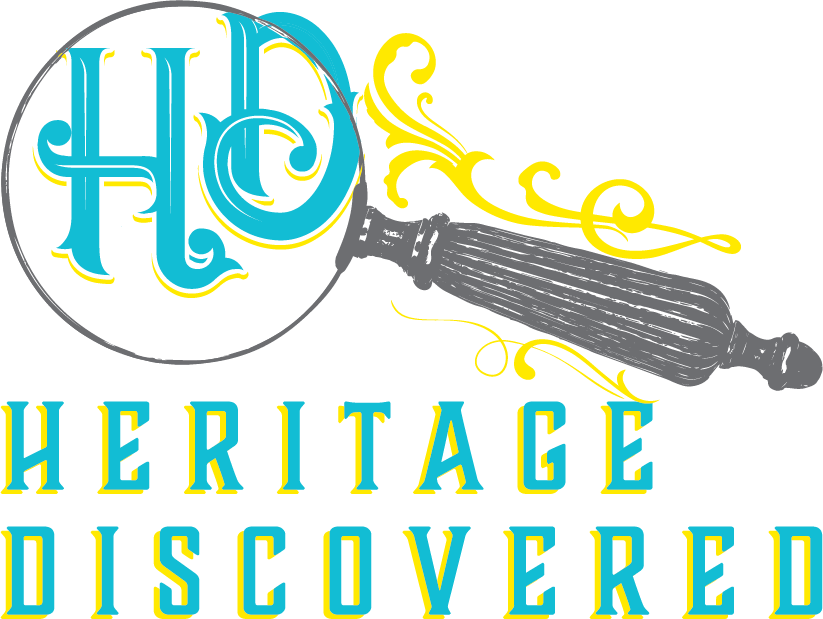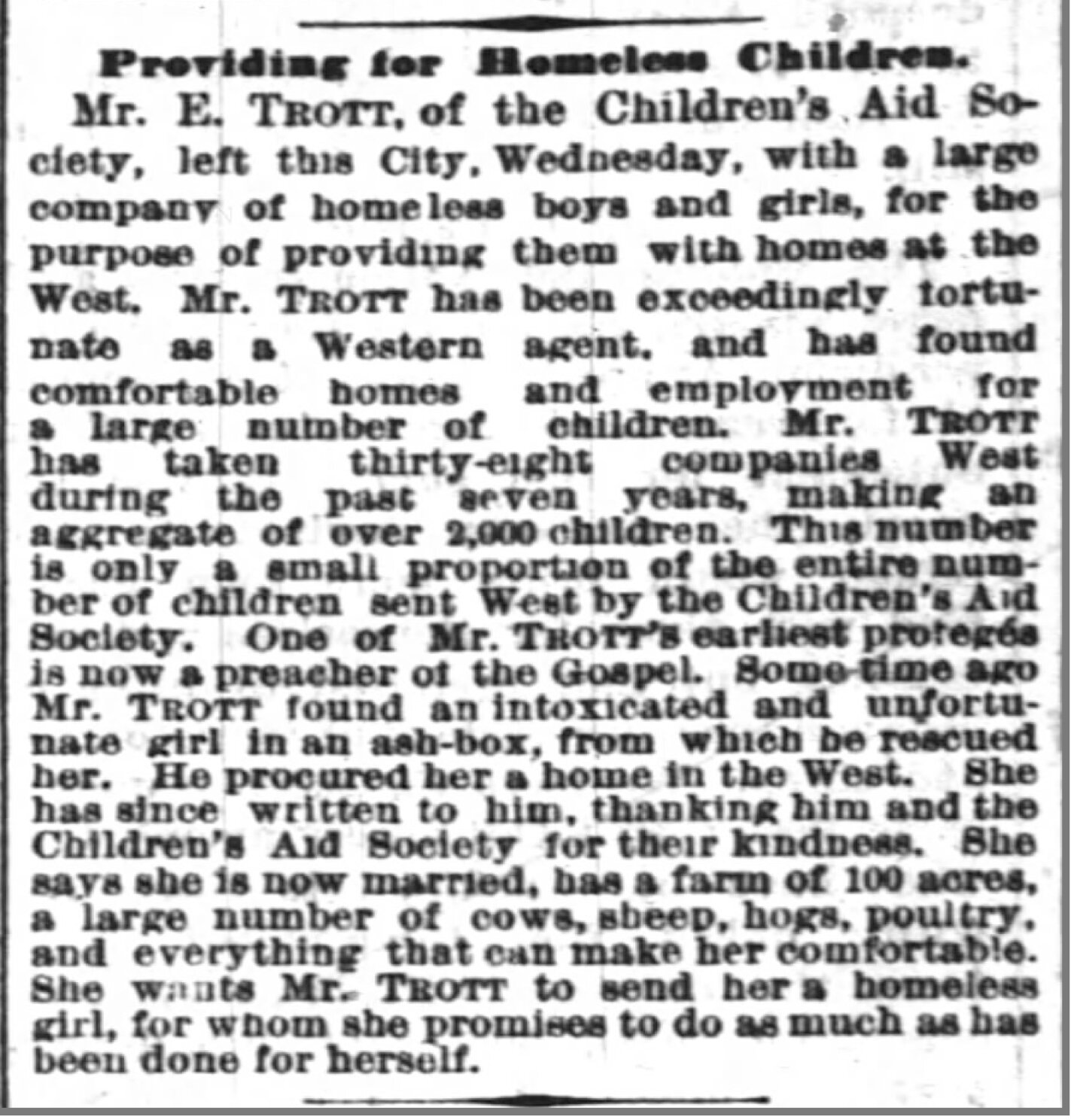How 250,000 Children Rode Orphan Trains To New Families Across The US
*This post may have affiliate links, which means I may receive commissions if you choose to purchase through links I provide (at no extra cost to you). All opinions remain my own.
Beginning about 1850 and lasting until 1929, around 250,000 homeless and orphaned children were loaded onto “orphan trains” and sent across the country and to Canada. The kids came from not only New York, but also Boston, Philadelphia, and Chicago.
Since every organization that ran orphan trains kept its own records, no one knows exactly how many kids were adopted out through them.
These destitute children mostly ended up in the Midwest but went all over the US.
Related post: How To Research Your Orphan Ancestors
Source: The New York Times (New York, New York), 7 Oct 1870, Page 2 via newspapers.com
History of the orphan trains
Waves of immigrants were arriving in New York in the 1840s and 1850s. They were crowded into tenements and at risk for infectious diseases like tuberculosis, which spread easily in those environments. Dangerous jobs and unsafe working conditions could lead to disabilities or early deaths.
Many didn’t have safety nets like extended family to fall back on. If a parent got sick, died, or wasn’t able to work, children could be turned out onto the streets. Some ended up in orphanages even if one or both of their parents were still alive but weren’t able to afford to raise them anymore.
By the 1850s, an estimated 30,000 kids were living on the streets of New York.
One of the earliest orphanages founded in response to this was the New York Juvenile Asylum. It began in 1851 to care for orphans and “juvenile delinquents” – street kids – in Manhattan.
The New York Foundling Hospital was another, started in 1869 by the Sisters of Charity for Catholic children.
Another major orphanage at the time – and credited as the creator of the orphan train movement – was the Children’s Aid Society. Founded in 1853 by Charles Loring Brace, the Society operated a school for poor children, and the first free school lunch program in the US.
Brace started the Society’s orphan trains as an “emigration plan” to settle poor kids with Midwestern farm families, where they could have a better, more stable life.
In truth, Brace got the idea from the Boston Children’s Mission [pdf], which began shipping kids on trains about 1849 or 1850. 30 homeless children went to New Hampshire and Vermont on that first train.
While the New York Juvenile Asylum, New York Foundling Hospital, and many other smaller orphanages also joined in the orphan train movement, the Children’s Aid Society is the most well-known. But the New York Juvenile Asylum alone placed a total of 6,323 children between 1855 and 1903.
The Children’s Aid Society’s orphan trains began in 1854 to Dowagiac, Michigan. The kids were only told they were leaving for a new place and given a new outfit and a bible.
The trains were cold, with hard wooden seats, and some slept on the floor because it was the more comfortable option. They weren’t even always fed three meals a day while on the trip. It must have been a scary and confusing time for them.
Kids were chaperoned in groups of 10-40 along pre-planned routes. The train’s arrival would be advertised at the towns along the route and interested families would come to meet the train at a prearranged spot. The kids lined up to be inspected; their teeth, muscles, and general health would be checked and judged.
Older children were harder to adopt out, and some siblings were separated by families who only wanted one child. Any kids not adopted would reboard the train and continue along until the end of the route. Anyone who wasn’t adopted was taken back to the city they came from.
The Children’s Aid Society had adoption contracts, requiring things like the kids must go to school and be kept for a certain amount of time, depending on age.
Children coming from the New York Foundling Hospital, on the other hand, were matched in advance with Catholic families. Most of these kids were under 4 years old, with adoptive parents having the option of placing orders for specific features like a girl with blue eyes.
There weren’t any background checks, and some of the kids were adopted purely to help out as laborers, while some went into loving families.
There also wasn’t always oversight into the families once the kids were placed. Some of the children were physically, mentally, and/or sexually abused. But most did have a better life than what they had experienced before. They had a safe place to stay, could attend school, and had food and a roof over their heads.
The Children’s Aid Society claimed that 87% of their placements went well, but I’m not sure if they asked only the guardians how it was going.
The practice began to die out in the late 1880s with states began passing laws to stop placing children out of state, beginning with Michigan in 1887. The last train ran in May 1929 to Sulphur Springs, Texas.
There are at least 40 million descendants of orphan train riders today!
Some other organizations that ran orphan trains can be found here and here. The New England Home for Little Wanderers in Boston is another. It placed 178 children from 1865 to 1906. Half went to homes in Massachusetts and most of the rest went to Michigan.
Related post: Everything You Need To Know About Using Home Sources
Where did the orphan train riders go?
Where did the nearly quarter of a million children who rode the orphan trains end up?
For kids from the Children’s Aid Society, the majority through 1910 were actually placed in New York. Over 33,000 kids stayed in New York, many going upstate. Michigan, Illinois, Iowa, and Missouri each took between 5,000 and 10,000 children.
Pennsylvania, Indiana, Minnesota, New Jersey, Nebraska, and Kansas were the next states taking the most, with 3,000 to 4,999 each.
Most of the western and southern states took only about 1,000 children. Arizona and Mississippi were the only states that didn’t take any (Alaska and Hawaii weren’t states until well after the movement ended).
Another 566 children went to Canada, and nearly 60 to Indian Territory.
The Orphan Train Movement project has interactive maps showing placements from the Children’s Aid Society, using data from their annual reports.
Related post: 31 Family History Interview Questions To Bring Out Memories
Source: The St Louis Republic (St. Louis, Missouri), 31 May 1901, Page 7 via newspapers.com
Where to find information on orphan train riders
Information about orphan train riders is scattered all over the internet and in archives around the country. This is a selection of some helpful websites. Most of these are personal or volunteer-based websites. Some have lists of orphan train riders.
The National Orphan Train Complex has resources and links
Nebraska State Historical Society Orphan Train Rider Database
Related posts:
How To Use Libraries And Archives In Your Genealogy
How To Use The Digital Public Library Of America For Genealogy Research
(not the full article) Source: The Kansas City Times (Kansas City, Missouri), 10 Dec 1910, Page 15 via newspapers.com
In summary
For nearly 80 years, about 250,000 homeless, poor, or orphaned children were placed on trains and sent around the US and Canada to live with new families.
The kids came from major cities like New York, Boston, Philadelphia, and Chicago.
No one knows exactly how many children were orphan train riders.
By the 1850s, about 30,000 kids were living on the streets in New York.
Orphan trains began about 1850 by the Boston Children’s Mission as a way to place poor children with families to have a better life.
The three major orphanages in the movement were the New York Juvenile Asylum, the New York Foundling Hospital, and the Children’s Aid Society. But many smaller orphanages also ran orphan trains.
Most children weren’t matched in advance and were adopted by any family who would take them.
There weren’t any background checks and systems like today. The majority of kids were placed into stable and loving homes, some experienced abuse.
The practice began to wane in the late 1880s and the last orphan train ran in 1929 to Texas.
Most of the kids went to New York, Michigan, Illinois, Iowa, and Missouri, but went to all 48 contiguous US states, and some to Canada.
There’s no central place for information on orphan train riders, but resources can be found in archives and online.




